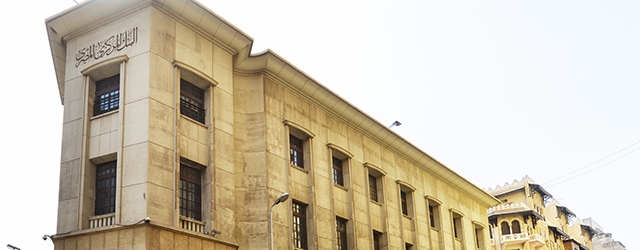Egypt and Lebanon may have very different economies but they have one thing in common: the importance of their central banks.

Lebanon and Egypt are a portrait in contrasts. The former gazes into an uninviting future of annual growth hovering around 1%, declining investor confidence and ballooning indebtedness while the latter enjoys rising growth, falling debt levels and—despite September’s protests—strong support for reforms that seem to have helped the economy turn the corner.
One thing these economies share, however, is dependence on the banking system to finance government spending. Their central banks act as the conduit, on top of meeting other obligations including, in Lebanon’s case, maintaining a currency peg with the US dollar.
“Banking and sovereign risks are more interlinked than in other countries,” says Gilbert Hobeika, associate director of Fitch Ratings’ financial institutions team. “Lebanese banks have substantial exposures to the Banque du Liban [BdL] and to Lebanese sovereign debt, due to subdued growth and lack of lending opportunities.” Fitch rates two of Lebanon’s banks, as well as Lebanon itself, CCC; most of Egypt’s banks, by contrast, are rated at the same level as the sovereign, B+.
The worry now is that as expectations of declining commercial bank deposit inflows solidify and local demand for dollars rises, this shaky status quo could start to break down. With banks calling in more in repayments from the BdL to meet their obligations, the central bank would in turn need to dig into its reserves even as it struggles to maintain the dollar peg.
While Lebanon’s banking sector is generally well managed, and its leadership has long experience handling challenging situations, Hobeika says, the domestic operating environment is difficult and there are clear and increasing pressure signals.
“Loan quality has mildly deteriorated,” he notes. Fitch estimates Stage 3 loans at about 10% of gross loans at the end of the first half for the sector as a whole, and loans constituted only about 25% of total combined assets. “But overall asset quality is weaker, because it is highly sensitive and exposed to the BdL and the sovereign,” adds Hobeika. Capitalization, too, is weak because of that exposure. “There are also funding and liquidity concerns, because commercial bank deposits are generally short term whilst their loans to the BdL tend to be longer term.”
For stability to return, Hobeika reckons commercial bank deposit levels need to rise to control the funding cost, which has increased in the past 18 months. Overall confidence in Lebanon needs to return—something that could really happen if the government gets serious about implementing reforms, he argues.
Lebanon’s banks and the BdL have survived crises including the 2005 murder of then former Prime Minister Rafik Hariri and the 2006 war between Hezbollah and Israel, says Fitch’s head of Middle East and Africa sovereign ratings, Jan Friederich, but the current crisis suggests something deeper.
“These previous crises were more serious,” he says, “which is why we think the current decline in inflows could be a more fundamental adjustment of confidence in Lebanon’s financing model.” That suggests the BdL’s apparently healthy gross foreign reserves don’t reflect obligations to commercial banks.
“The central bank’s foreign currency position is significantly weaker when viewed in net terms,” says Friederich, “because it has large [foreign exchange] liabilities to Lebanese commercial banks, which we estimate at $62 billion in June, of which $19 billion are mandatory reserve requirements.”
By contrast, the Central Bank of Egypt and the nation’s commercial banks are operating in a more benign environment; although total lending by the latter to the former is around 32%, with some 10% more made up of loans to state-owned enterprises. The high interest rates of the past few years, coupled with high international confidence in the government’s reform program, have led to large inflows of cash. Ongoing cuts in interest rates should in turn give a much-needed boost to private-sector lending, which currently makes up only 18% of the total for Egypt’s commercial banks.
“Going forward, banks are expected to switch their emphasis from T-bills to private-sector lending,” says Zeinab Abdalla, director of Fitch Ratings’ financial institutions team, “although the low equity-to-asset ratio [around 7% against 10% to 12% in equivalent emerging countries] suggests banks would struggle to maintain their capital base if they took on a huge amount of new lending.”



